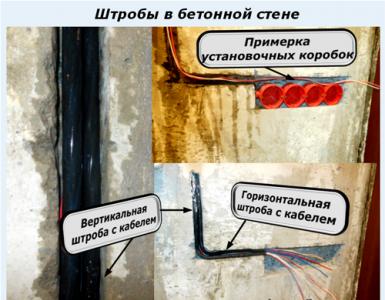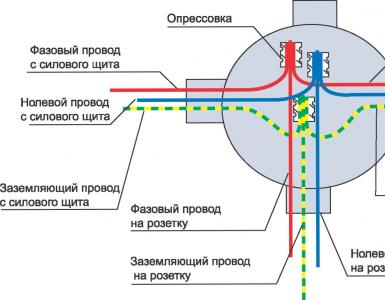How to assemble an induction furnace for melting metal at home with your own hands
Smelting of metal by induction is widely used in various industries: metallurgy, mechanical engineering, jewelry. A simple induction-type furnace for melting metal at home can be assembled by hand.
Heating and melting of metals in induction furnaces occurs due to internal heating and changes in the crystal lattice of the metal when high-frequency eddy currents pass through them. This process is based on the phenomenon of resonance, in which the eddy currents have a maximum value.
To cause the flow of eddy currents through the molten metal, it is placed in the zone of action of the electromagnetic field of the inductor - the coil. It can be in the form of a spiral, figure eight or trefoil. The shape of the inductor depends on the size and shape of the workpiece to be heated.
The inductor coil is connected to an AC power source. In industrial smelting furnaces, currents of industrial frequency of 50 Hz are used; for melting small volumes of metals in jewelry, high-frequency generators are used, as they are more efficient.
Kinds
Eddy currents are closed in a circuit limited by the magnetic field of the inductor. Therefore, heating of conductive elements is possible both inside the coil and from the outside of it.
- Therefore, induction furnaces are of two types:
- channel channels, in which the capacity for melting metals are channels located around the inductor, and a core is located inside it;
- crucible, they use a special container - a crucible made of heat-resistant material, usually removable.
Channel oven too large and designed for industrial volumes of metal melting. It is used in the smelting of cast iron, aluminum and other non-ferrous metals.
Crucible furnace quite compact, it is used by jewelers, radio amateurs, such a stove can be assembled with your own hands and used at home.
Device
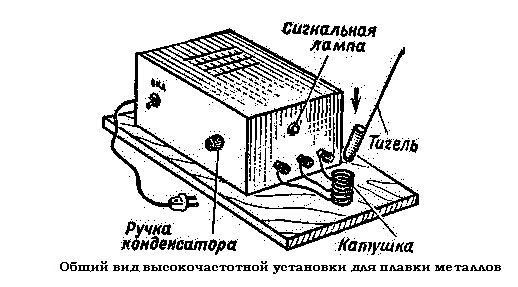
- A homemade furnace for melting metals has a fairly simple design and consists of three main blocks placed in a common housing:
- high frequency alternating current generator;
- inductor - a spiral winding made of copper wire or tube, made by hand;
- crucible.
The crucible is placed in an inductor, the ends of the winding are connected to a current source. When current flows through the winding, an electromagnetic field with a variable vector arises around it. Eddy currents arise in a magnetic field, directed perpendicular to its vector and passing along a closed loop inside the winding. They pass through the metal placed in the crucible, while heating it to the melting point.
Advantages of an induction furnace:
- fast and uniform heating of the metal immediately after turning on the unit;
- direction of heating - only metal is heated, and not the entire installation;
- high melting rate and melt homogeneity;
- there is no evaporation of alloying metal components;
- the installation is environmentally friendly and safe.
A welding inverter can be used as a generator of an induction furnace for melting metal. You can also assemble the generator according to the diagrams below with your own hands.
Furnace for melting metal on a welding inverter
This design is simple and safe as all inverters are equipped with internal overload protection. In this case, the entire assembly of the furnace comes down to making an inductor with your own hands.
It is usually performed in the form of a spiral made of a thin-walled copper tube with a diameter of 8-10 mm. It is bent according to the template of the required diameter, placing the turns at a distance of 5-8 mm. The number of turns is from 7 to 12, depending on the diameter and characteristics of the inverter. The total resistance of the inductor must be such that it does not cause overcurrent in the inverter, otherwise it will be tripped by the internal protection.
The inductor can be fixed in a graphite or PCB housing and installed inside the crucible. You can simply place the inductor on a heat-resistant surface. The case must not conduct current, otherwise the eddy current short circuit will pass through it, and the power of the installation will decrease. For the same reason, it is not recommended to place foreign objects in the melting zone.
When operating from a welding inverter, its housing must be grounded! The outlet and wiring must be rated for the current draw of the inverter. 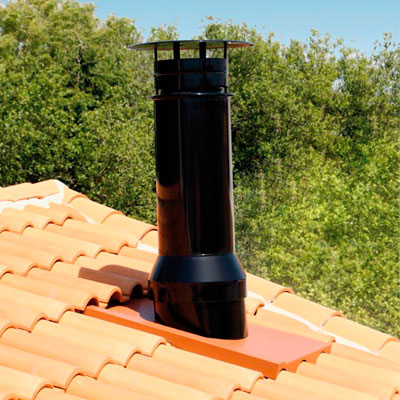 The heating system of a private house is based on the operation of a stove or boiler, high performance and a long uninterrupted service life of which depends both on the brand and installation of the heating devices themselves, and on the correct installation of the chimney.
The heating system of a private house is based on the operation of a stove or boiler, high performance and a long uninterrupted service life of which depends both on the brand and installation of the heating devices themselves, and on the correct installation of the chimney.
you will find recommendations for choosing a solid fuel boiler, and in the next one you will get acquainted with the types and rules:
Transistor induction furnace: circuit
There are many different ways to do it yourself. A fairly simple and proven scheme of a metal melting furnace is shown in the figure:
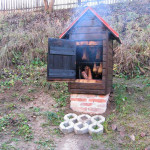
- To assemble the installation yourself, you will need the following parts and materials:
- two field-effect transistors of the IRFZ44V type;
- two UF4007 diodes (UF4001 can also be used);
- resistor 470 Ohm, 1 W (you can take two 0.5 W connected in series);
- film capacitors for 250 V: 3 pieces with a capacity of 1 μF; 4 pieces - 220 nF; 1 piece - 470 nF; 1 piece - 330 nF;
- copper winding wire in enamel insulation Ø1.2 mm;
- copper winding wire in enamel insulation Ø2 mm;
- two rings from the chokes removed from the computer power supply.
DIY assembly sequence:
- Field-effect transistors are installed on radiators. Since the circuit gets very hot during operation, the radiator must be large enough. You can install them on one radiator, but then you need to isolate the transistors from the metal using gaskets and washers made of rubber and plastic. The pinout of the field-effect transistors is shown in the figure.

- It is necessary to make two chokes. For their manufacture, copper wire with a diameter of 1.2 mm is wound on rings removed from the power supply unit of any computer. These rings are composed of powdered ferromagnetic iron. It is necessary to wind from 7 to 15 turns of wire on them, trying to maintain the distance between the turns.

- Collect the above capacitors into a battery with a total capacity of 4.7 μF. The capacitors are connected in parallel.
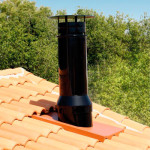
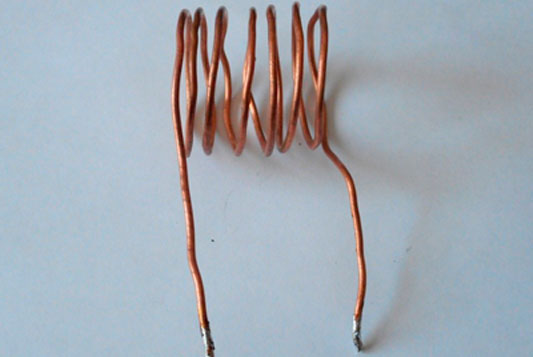
- The winding of the inductor is made of copper wire with a diameter of 2 mm. 7-8 winding turns are wound on a cylindrical object suitable for the diameter of the crucible, leaving long enough ends for connection to the circuit.
- Connect the elements on the board in accordance with the diagram. A 12 V, 7.2 A / h battery is used as a power source. The current consumption in the operating mode is about 10 A, the battery capacity in this case will be enough for about 40 minutes. If necessary, the furnace body is made of heat-resistant material, for example, PCB. The power of the device can be changed by changing the number of turns of the inductor winding and their diameter.
Induction heater for melting metal: video
Lamp induction oven
A more powerful induction furnace for melting metals can be assembled with your own hands on electronic tubes. The diagram of the device is shown in the figure. 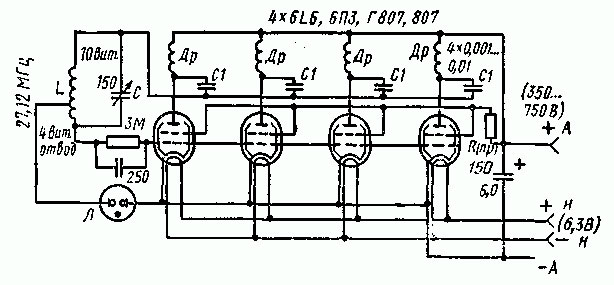
To generate high-frequency current, 4 beam lamps connected in parallel are used. A copper tube with a diameter of 10 mm is used as an inductor. The unit is equipped with a trimmer capacitor for power regulation. The issued frequency is 27.12 MHz.
To assemble the circuit you need:
- 4 electronic tubes - tetrodes, you can use 6L6, 6P3 or G807;
- 4 chokes for 100 ... 1000 μH;
- 4 capacitors 0.01 μF;
- neon indicator lamp;
- trimmer capacitor.
DIY assembly of the device:
- An inductor is made of a copper tube, bending it in the form of a spiral. The diameter of the loops is 8-15 cm, the distance between the loops is at least 5 mm. The ends are tinned for soldering to the circuit. The diameter of the inductor should be 10 mm larger than the diameter of the crucible placed inside.
- Place the inductor in the housing. It can be made of a heat-resistant, non-conductive material, or of metal, providing thermal and electrical insulation from the circuit elements.
- Cascades of lamps are assembled according to the scheme with capacitors and chokes. The cascades are connected in parallel.
- A neon indicator lamp is connected - it will signal that the circuit is ready for operation. The lamp is brought out to the body of the installation.
- The circuit includes a variable capacitor trimmer, its handle is also brought out to the body.
For all lovers of cold-smoked delicacies, we suggest learning how to quickly and easily make a smokehouse with your own hands, and get acquainted with the photo and video instructions for making a smoke generator for cold smoking.
Cooling circuit
Industrial melting plants are equipped with a forced cooling system based on water or antifreeze. Performing water cooling at home will require additional costs, comparable in price to the cost of the metal smelter itself.
Air cooling with a fan is possible if the fan is located sufficiently far away. Otherwise, the metal winding and other elements of the fan will serve as an additional circuit for closing eddy currents, which will reduce the efficiency of the unit.
Elements of electronic and lamp circuits are also capable of actively heating up. To cool them, heat sinks are provided.Safety measures at work
- The main danger during operation is the risk of getting burns from heated elements of the installation and molten metal.
- The lamp circuit includes high voltage elements, therefore it must be placed in a closed case, excluding accidental touching the elements.
- The electromagnetic field can affect objects outside the body of the device. Therefore, before work, it is better to put on clothes without metal elements, remove complex devices from the coverage area: phones, digital cameras.
The home melting furnace can also be used to quickly heat metal elements, for example, when tinning or molding them. The characteristics of the presented installations can be tailored to a specific task by changing the parameters of the inductor and the output signal of the generating sets - this way you can achieve their maximum efficiency.


